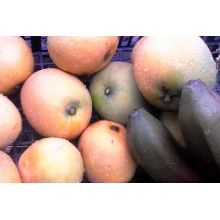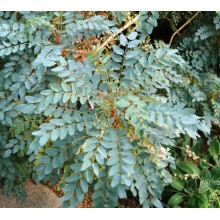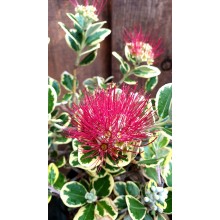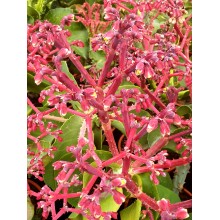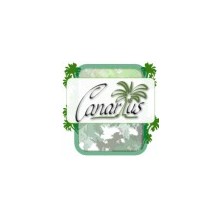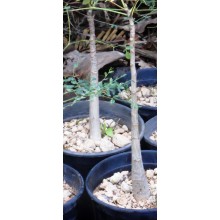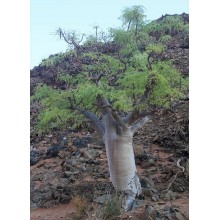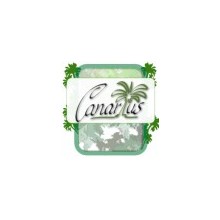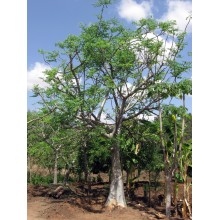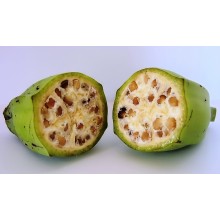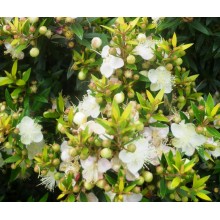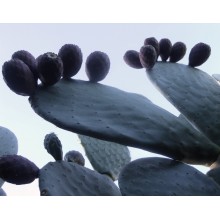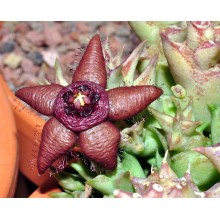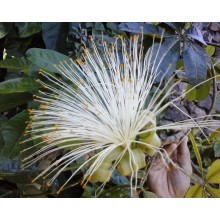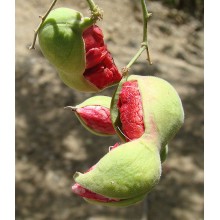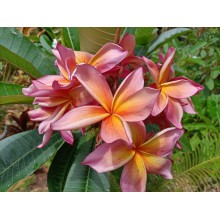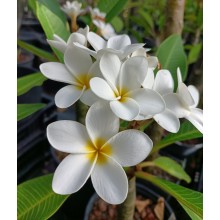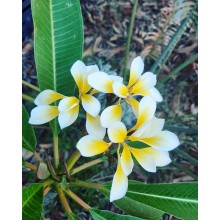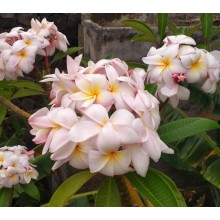Plantes résistantes à la sécheresse Il y a 140 produits.

Dans cette section, nous avons rassemblé toutes ces plantes qui sont adaptées aux conditions arides ou sèches. Normalement, la majorité de ces espèces, qui poussent dans des environnements secs, sont cireuses, succulents, feuillues, collantes, à épines et même plus petites que le reste.
Parmi les plantes résistantes à la sécheresse, vous pouvez retrouver plusieurs espèces comme: le Pithecellobium doux, la Ruta graveolens, le Syzygium cordatum, le Tamarindus indica et bien d’autres.
-
Mangifera 'Gomera 1' - Hardy Canarian Mango
Mangifera 'Gomera 1' - Hardy Canarian Mango
Tall 16x30 cm pot - Gomera is a traditional Canarian strain of vigorous mango trees, producing rounded yellow fruits of small-medium size, with excellent flavour. This mango is hardier than most mango cultivars to drought and cold.
38,00 € -
Marcetella moquiniana
Marcetella moquiniana
Elegant shrub with architectural shape. Regularly arranged pinnate leaves, show colouful petioles. Flushes of new leaves are bright red. This Canarian native grows wild at mid-low elevation, in mediterranean-like conditions. It is easy to grow and can be watered througout the year, as it is evergreen.
24,00 € -
Metrosideros excelsa 'Variegata'
Metrosideros excelsa 'Variegata'
What a beauty! This plant came out of the brazilian forests, and it soon became one of the most sought after indoor plants. According to begonia experts, this a "Spotted-leaf angel-wing cane-type begonia" and indeed the wings are dotted with silver circles.
38,20 € -
Moringa drouhardii
Moringa drouhardii
Baobab-like bottle tree from SW Madagascar with an unmistakeable white waxy stem. It is easy to grow, even in pots, but it will never become a really huge tree until it is planted in the ground. We offer plants like the ones in the pictures, about 3-4 cm in stem diameter. It is used in medicines and cosmetics.
26,50 € -
Moringa stenopetala
Moringa stenopetala
Large shrub or tree with bottle-shaped trunk, becoming gigantic in favourable tropical conditions. It is regarded as extremely useful, as it bears long twisted seed pods, and edible leaves eaten like cabbage.
43,20 € -
Musa balbisiana
Musa balbisiana
This is a wild banana with seed, the hardiest ancestor of most edible bananas. It is hardier to cold, wind and drought than most bananas. Fruits are edible but they are starchy and full of seeds. Fibres are strong and useful.
38,00 € -
Myrtus communis ssp. tarentina
Myrtus communis ssp. tarentina
Myrtus communis is the most classic Mediterranean Myrtle. Tarentina is the short leaved, compact form. It is a tough Mediterranean plant producing remarkable scents, both in leaves and flowers. It is easy to grow, also in pots.
11,80 € -
Opuntia ficus-indica cv. Red Spineless
Opuntia ficus-indica cv. Red Spineless
It is not truly spineless, but it has very few spines. It is a large, robust selection with red juicy fruits of good quality.
25,50 € -
Pachira glabra
Pachira glabra
LARGE, 80-100 cm tall - Tree with edible chestnut-like fruits, native to Tropical America in swampy areas. The swollen trunk helps it to resist seasonal droughts. It can be kept low and grown as a houseplant, just as its relative Pachira glabra, which is often sold with a braided trunk.
38,00 € -
Pithecellobium dulce - Manila Tamarind, Guamuchil
Pithecellobium dulce - Manila Tamarind, Guamuchil
This tree in the legume family grows to 5-15 m in height. It bears fruits with an edible pulp and it is used medicinally and as a shade tree. It is easy to grow, with elegant foliage and moderately spiny branches.
43,20 € -
Plumeria 'Kauka Wilder'
Plumeria 'Kauka Wilder'
Potted plant. Kauka Wilder is rainbow coloured Hawaiian hybrid. It flowers twice a year, in May and October. Leaves are glossy, growth is robust and erect.
37,20 € -
Plumeria 'King Kalakaua'
Plumeria 'King Kalakaua'
Adult, thick 60-80 cm plant. Small white flowers.
35,20 € 44,00 €Prix réduit ! -
Plumeria 'Aztec Gold'
Plumeria 'Aztec Gold'
This is the true, original Aztec Gold, from the USA, with large pendulous leaves and a non-erect, often leaning growth habit. And, of course, yellow flowers of unsurpassed beauty.
47,50 € -
Plumeria 'Bali Whirl' - Double Flowers !
Plumeria 'Bali Whirl' - Double Flowers !
Adult, thick 60-80 cm plant. This is the double-flowered plumeria! This frangipani has double flowers with more than five petals. White and yellow. Highly sought-after by collectors.
31,20 € 39,00 €Prix réduit ! -
Plumeria 'Daisy Wilcox'
Plumeria 'Daisy Wilcox'
Adult, thick 40-80 cm plant. Daisy Wilcox is still for us THE BEST Plumeria hybrid. The first flowers in season are the largest of all. The colour is so delicate! .... and the thick large clusters of flowers keep on going through many months.
52,00 €
Pour le moment, il ya peu de produits dans cette catégorie Plantes résistantes à la sécheresse
















